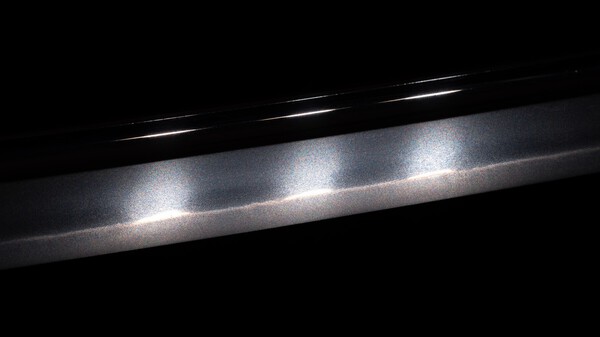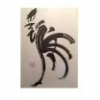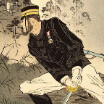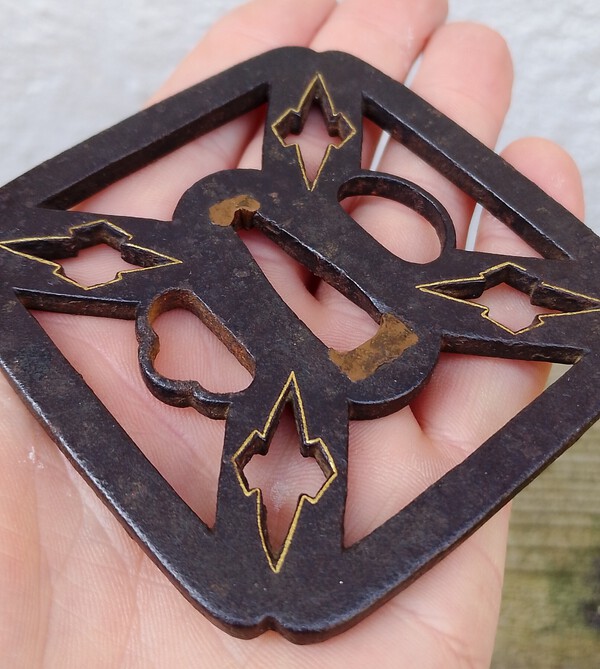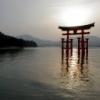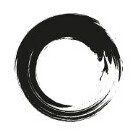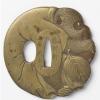Leaderboard
Popular Content
Showing content with the highest reputation on 04/08/2025 in all areas
-
I have never statistically evaluated the presence of utsuri for higher rated blades in a time and school I agree with you that the prerequisite for the emergence of utsuri is first-class tamahagane. We can only assume that the typical appearance of Jifu utsuri is a consequence of fluctuations in the homogeneity of the raw material with respect to carbon content I am not a metallurgist and am not competent to make any conclusion However, I can attach examples of three different blades. All have nioiguchi in the ko-nie. The first is the Soden-Bizen school from the Nanbokucho period Prominent midare utsuri5 points
-
This photo helps a lot. I admit that I initially thought it cast. Now I think it is not cast, but rather has been coated with something akin to clear lacquer or varnish. It would both make the tsuba look "wet" AND mute the appearance of the tsuba in a way that looks like many of the cast tsuba we have seen. If as heavy as some of the varnishes that I have used in painting, it might even fill (cement) in the signature enough to explain some of the odd look of the signature. The extra photo helped a lot.4 points
-
This looks quite spectacular actually. Appears to be a ginzogan (silver inlaid) 3 body cutting best dated 1652 (承応 - Jōō gannen). I am traveling at the moment, I am sure someone else will respond with a more detailed translation. Please be sure to care for it well (do not handle the blade with bare hands and keep oiled to preserve the condition and avoid rusting).3 points
-
3 points
-
Horsetail is basically EQUISETUM, and there are many varieties of it. The plant contains micro-crystalline silica which explains the very fine abrasive effect. In former times, it was used to polish tin tableware.3 points
-
The squares in the diamond shape is called "maru ni yotsume-hishi", used by numerous families. https://myoji-kamon.net/kamonDetail.htm?from=rank&kamonName=丸に四つ目菱 The "yin-yang" symbol is also a family crest (hidari-futatsu tomoe). https://irohakamon.com/kamon/tomoe/hidarifutatsutomoe.html The round, indistinct remains of a seal may be "maru ni mitsuhiki-ryō", also used by many families. https://irohakamon.com/kamon/hikiryou/marunimitsuhiki.html As for the meaning; they could be crests representing a joining of families, or an alliance of some sort. And of course you can't discount the possibility that the item was made in the late 1800s to appeal to foreign tourists. I'm probably inclined to think the latter. Quite flashy, not suitable for the battlefield, not suitable for official business - so probably something made for some non-samurai with a bit of money, or made for the foreign tourist trade.3 points
-
Steve, looks a nice package. The smith is “Kaneuji” (兼氏), real name Yoshida Reiichi (吉田 鈴市), born Taisho 14 (1925) January 13 and registered as a Seki smith Showa 13 (1938) September 9 (which is very early and possibly as a deshi? His father was as swordsmith). He is also listed in 1940 as a member of Seki Token Kaji Association (at age 15). In 1942 Banzuke of around 400 smiths he is listed as Ryoko no Retsu (7/7) but would only be age 17. The mei with the date is a bit confusing, it could be read as "Ishii Iemori-to" ("sword of Ishii Iemori") that is the individual, or could be read "Ishii Ke Mamori-to" ("protection sword for the Ishii Family"). Possibly is the latter.3 points
-
2 points
-
2 points
-
I know no one likes this question… “What does your sensei recommend?”2 points
-
The attached diagram may be of use. Monosteel is western parlance for a solid steel blade with no hamon (if it had a hamon it would be called honyaki), not sure what the Japanese term is. If you can't see any lamination lines it's probably monosteel, though on old rusty steel like that knife it can be hard to tell. The easiest way to check is to try sharpening the kireha on a muddy water-stone like those reddish brown 1000 grit King brand ones that seem to be found so often in Japan as to be a tripping hazard, if it's laminated you'll see a contrast between the soft steel of the jigane and the hard steel of the hagane. Traditional asymmetrical Japanese type kitchen knives like the one pictured are ni mai or two layer laminated, which is very rare on nihonto for obvious reason. San mai and warikomi are common to both kitchen knives and swords. Kobuse is also a form of lamination, and essentially warikomi in reverse, and is exclusive to swords. Here's a good set of diagrams for sword lamination types: http://www.ksky.ne.jp/~sumie99/construction.html2 points
-
Also found this text: Google keywords: shirasaya horsetail reed https://islandblacksmith.ca/process/carving-saya-scabbard/ http://www.scnf.org/styled-10/styled-4/styled-8/Saya_2.html https://www.woodworkforums.com/archive/index.php/t-154064.html ABOVE LINK HAS THIS TEXT: Schtoo 12th June 2012, 04:24 PM Steve, Found this after a quick look; blog page with rough instructions about preparing tokusa (http://ameblo.jp/minamototaiken/entry-11168496333.html) In Japanese of course, but they give a rough description of boiling, then drying then wetting and slicing it down a side and peeling it open. The bundles in the pic at the bottom are how I've seen it used, for smoothing out textured surfaces like an abrasive brush. Like I said, I've never used it but I did recall the fellow I was watching being very careful to not only not use it in a vertical orientation, but he repeatedly brought the dust back into the area he was working. That's why I assume it breaks down a little rapidly, but perhaps that was part of how he was using it. I think I can buy it at the home centre here, wrapped up into a puck for smoothing out carved items. Never bothered with it myself though, maybe I should? Oh, I don't know that it's the same plant but there's a kind of garnish/pickle that uses horsetails, and it tastes pretty good. Have to introduce you to e-no-abura/shiso oil/perilla oil. Great finishing oil, and tastes good as salad oil or in leaf form. Stu. Also try keywords tokusa horsetail reed BaZZa.2 points
-
Yes, this is correct. I would say the reading is: Ishii-ke mamorigatana2 points
-
Steve, Don't know how much you already know, so apologies if I'm giving too much. Type 98 Japanese Army officer sword (gunto). You can read up on these on this site: Army Commissioned Officers Shin-Gunto - Ohmura The red/brown tassel was used by Majors - Colonels The saya cover is an upgrade, but we'll need closer, clear shot or 2 to see if it's shark or ray. I have 10 Kaneuji on file with Showa and other stamps The Showa stamp was used by the civilian (not arsenal) Seki Cutlery Manufacturers Association who inspected blades for quality. They are usually non-traditionally made, but with good quality workmanship and hamon.2 points
-
1 point
-
Live Auctioneer's has a large tosogu lot posted from some sort of auction house in California. First, it looks like they posted everything twice and the pics are not great quality, half the menuki are just a single shot of them from the back. Only one item has a storage box which is a big flag. Next, the tsuba appear to be very low quality and I see a ton of kozuka that appear to be replicas from what I can see in the pics. Just curious if anyone else saw this strange collection without any storage at all. They also have some pieces from an upcoming Bonham's auction, I really did not see anything too exciting here considering Bonham's does have great pieces sometimes. I use these sites to keep up on studying and keeping my eye trained. Check out the expected prices they think they are going to get from the CA auction, it is laughable. They have a few katana as well; these may be the most ridiculous of them all. Here is one they expect a range from $,1875-$2,750. If I am wrong, please let me know as I am simply trying to learn more every day. Jason1 point
-
1 point
-
1 point
-
1 point
-
I don't think I see anything that says "Japanese" except the title.1 point
-
Hizen smiths usually signed with a tachi-Mei meaning the signature is facing outwards when the blade is worn cutting edge down. It’s one of the things that this school did that is fairly unique on blades in Shinto and later eras. There may be some confusion of the previous owner regarding the smith in question. Mecox above has a wartime smith that signed this way and the fittings also match that. Unless there is another Hizen smith that signed this way from the Shin Shinto era, it’s more likely that this is a wartime smith. The other stuff on the tags all seems correct.1 point
-
1 point
-
Hi Charlie, This forum is dedicated to the study and preservation of genuine Japanese swords and fittings. For that reason, not many of us actually use our swords for martial arts. I am going to move your thread to the "General Nihonto related discussion" section, in hopes to get more eyes on your question, and maybe find someone with more info. All the best, and welcome to the forum! Cheers, -Sam1 point
-
1 point
-
One way to tell would be do you have first hand knowledge about manufacturing process? Could you make this? The casting process is straight forward or maybe it is not. If the original model is investment cast there will not be any parting lines. There can be random flashing if cracks form in the mold/flask during burnout to remove the wax. Two part sand molds will leave parting lines and porosity and if the pieces are finished in a hurry you will see them. But, if you take the time to go over the piece, those lines can be removed and porosity can be filled or burnished. Fabrication by forging; you start with a solid disc then you have to sculpt the metal by physically cutting away the areas you don't want to reveal the design. This makes me think about the tools. What tools were on the bench and would one have the means to produce the design using those specific tools. But, the grain in forged iron will only be visible if the patina is not present and then only after an acid etch. Long story short, IMHO, one would need to have knowledge about how it was made to say what it is, cast or forged. Or as Dale put it the concrete floor on a cold day will reveal the truth 🫢.1 point
-
Oh my, so much time has passed and no input from the more knowledgeable. Perhaps it is my oni spirit causing commotion... Anyway, utsuri in general falls to the Bizen tradition and the Yamashiro. Both schools show very distinguished traces of utsuri. We know that Bizen and Yamashiro forged in heats that were low in the context of Nihonto. We know that the sword smiths in the Heian/ Kamakura produced their own raw material and indeed followed the river systems in Bitchu, Bizen etc to produce tamahagane. Later this moved further north and spread across Japan. And so Utsuri might be a sign of lower quality steel being refined to a huge milestone. Interesting is it not, that these two schools came together to make soshu. Forging at such high heats that impure remnants are left behind. Also an interesting note is that by the time soshu came round we had tatara making much higher grades of raw material. Perhaps @Brano @Jussi Ekholm @Gakusee you might have some data? Sorry to call you out.1 point
-
1 point
-
https://www.ebay.com/itm/405493486504 One listed here for US $1,135.25 [The site may be legitimate] Same exact guard, same images used but - DO NOT BUY FROM THIS SITE https://shopforsale.ru/product/326326781344 Suspected scam. In fact do not buy any of these! https://www.bonhams.com/auction/18307/lot/6093/a-nagatsune-tsuba-by-minamoto-nagatsune-edo-period-19th-century/ https://buyee.jp/item/jdirectitems/auction/r1000252521?lang=en1 point
-
Piers, your knife might well be a ground-down one of the TAKOHIKI type. There are so many variations in Japanese knife design! I will show photos of my old TAKOHIKI as soon as I receive it. It seems to have a metal sleeve/ferrule, no buffalo horn.1 point
-
Hi Aaron, you can have a HAMON on mono-steel knives. You have to differentiate between a blade with a visible hard steel layer in the cutting edge (NI MAI like on KANNA blades), and a HAMON caused by differential hardening (mostly with a clay coating = TSUCHI OKI).1 point
-
Looking through various sources, one additional possibility is a very well used 付け包丁. Kamaboko knife. Wrapping might be a later addition to strengthen a damaged handle. Edited to add: This post on KKF has some examples of old style Japanese kitchen knives as depicted in woodblock prints for future reference https://www.kitchenknifeforums.com/threads/Japanese-web-info-list.55062/page-7#post-10803811 point
-
Tang notches were usually to keep the fittings and blade together. They are almost certainly never anything to do with testing or "kills"1 point
-
Yeah, Namikawa sells it. https://www.namikawa-ltd.com/product/132 I have a bunch here, but have never used it.1 point
-
The 2nd mekugi-ana suggests the blade was re-mounted which is a bit of a rare thing for showato. Also, the blade is a bit - respectfully speaking - 'pedestrian' for this type of koshirae. Along with what looks like a crisp colonel's tassel, it might be worth kicking the tires to make sure everything checks out, e.g. nakago is not loose in the tsuka, habaki fits evenly in the saya, fuchi and koiguchi match, etc, etc. Also, maybe it's just the angle, but the chisel strokes for the soemei look different from the rest of the mei. Probably it's just the way it was, but worth a little extra due diligence since the koshirae elevate the blade and not the other way around. Just sayin.1 point
-
1 point
-
So we have some very nice images being shared and this is the main way we can study online, with shared images or video. There are other members being silent but who have access to great data to help this query. Perhaps if the more knowledgeable that have access to data could summarise which swords in the juyo and tokuju registry have been noted to show Utsuri and in what form we could break this up into era, utsuri type, frequency, etc. Much to be learned from the study of zufu and its contents as well as how they (the NBTHK) phrase the presence of utsuri on a sword. From my perspective the presence of utsuri denotes excellent and consistent heat treatment of steel and the uniformity in that particular area of the steel. Because it is a sign of excellent thermocycling and consistent practices that leads to uniform steel fit for purpose. Especially when dealing with raw materials such as forge made or tatara made Tamahagane. This raw material, although beautiful to behold, is not a forgiving medium and comes with it's own challenges when striving for "good sword steel ".1 point
-
1 point
-
To keep matters fast and simple - its not, the chance of repapering today is 10%.1 point
-
1 point
-
Hi everyone, I have my first nihonto still on the way home, but I want to start looking for a Naginata Naoshi, I just fell in love with them. Anyway I want to scout the waters and prices, I do not know what they generally go for, that is why I am here. My budget would be prefferably around 2000 Euros, If I would be really REALLY interested, i might squeeze my wallet up to 4000 I dont care about smith or papers. All I want is true Naginata Naoshi, prefferably from before Edo period (if it is really nice piece i would fall in love on the first sight, I wouldnt care about the age either ) regardless of lenght, shape, school, hamon, level of polish etc... A study blade I can always go to and enjoy looking at is the goal here. Looking mainly in Europe but if the blade is worth it and a great deal i dont care where it comes from. Thanks in advance for anything, even info on current prices. MP1 point
-
Yeah. Ofcourse buying forgery is bad. But what about buying worn out pieces? As long as you buy genuine piece, even if it have kizu, for me its worthy. Somebody put a lot of effort to make it. It still should be cherished. Im a freshmen in this topic. Started 15 years ago and had to drop it due to rl overworking. As long as I dn't overpay much it's fine for me. What my descendants would do with all I gather I dn't care. I won't be around then.1 point
-
I agree with oiling to stabilize the rust areas. My technique has been to apply a heavy oiling, to get the oil down into the dips and any micro crevices, and then careful repeated dabbing (not rubbing!) with a tissue to remove most of the oil on the surface.1 point
-
1 point
-
1 point
-
As stated above Darcy Broadbank suggested ligh oiling of the Nakago - others say don't touch it as the darkening is a sign of age - I wouldn't bother having it removed and a light oil would prevent any further forming of the red rust and it should be fine1 point
-
First, you’re absolutely right—prices for Sue Bizen blades, as well as high-quality late Mino works, are rising across the board at Japanese dealers. A big part of this is that older, historically desirable blades from the Kamakura and Nanbokucho periods are becoming increasingly scarce. As we’ve seen in recent auction sales, the prices for these top-tier swords are skyrocketing. Naturally, collectors and dealers are now turning their attention to what’s out there and looking for the next big "thing." Late Muromachi-period blades, long overlooked and often dismissed, are beginning to get the recognition they deserve. I’ve always found it curious that while scholars have traditionally celebrated Oei and early Muromachi Bizen blades, all of the Saijō-saku (highest-rated) Bizen smiths listed by Fujishiro actually come from the early Sengoku period: Hikobei and Yosozaemon Sukesada, as well as Ukyo no Suke and Jirozaemon Katsumitsu. In fact, every Saijō-saku smith from the Muromachi period—Muramasa, NoSada, Magoroku Kanemoto—belongs to this same era. (Full disclosure, I've long collected Katsumitsu family swords in addition to Soshu blades.) With high-end Sōshū and related works nearly gone from the market, and top-quality Ko-Bizen and Nanbokuchō Bizen works increasingly difficult to find, attention is now shifting to top quality Muromachi and Sue Bizen blades—especially those that are fully signed. NoSada and Magoroku Kanemoto are getting serious interest, too. Just 10 years ago, you could pick up a moroha tanto by Sukesada or Katsumitsu for $6,000–$10,000. Now? Try finding one for under $20,000. And if you’re looking for a Sue Bizen blade that is signed, dated, ubu, in good condition, not machi-okure, with a single mekugi-ana and a horimono—you’ll probably need a note from your bank manager to be able to buy it. Many myths have circulated about Sue Bizen blades over the years—most of them unfounded. If you still doubt their value as premier works of the era, I recommend reading the account of Katsumitsu-Munemitsu and the warlord Akamatsu Masanori. Personally, I’m glad these blades are finally being seen through fresh eyes. Fully-inscribed works with complete names and dates by these smiths have always been exceptional. I expect their prices will continue to climb—until, like the great swords before them, they’re locked away in private collections or viewable only in display cases at places like Touken World. Daito by Murmasa have long vanished from the scene after the market was cornered by rich Japanese collectors. Now, good luck finding long swords by Sukesada, Katsumitsu and NoSada. That's partly because they didn't make many because of the katateuchi craze, but they did make them, you just can't find them. Happy hunting!1 point
-
1 point
-
The 癸巳 is year in the 60 year Zodiac cycle. As we had good posts on tsuba age and dates, I think these might be plausible ones. 1593, 1653, 1713, 1773. 十月 would be 10th month. Unfortunately I am pretty much clueless when it comes to tsuba makers so cannot help on actual maker or even school.1 point
-
Just checked old threads. Plenty of long mei, no bohi. One example of long mei, with bohi, but no date. So this one is quite rare! Good luck with the sale.1 point
-
1 point
This leaderboard is set to Johannesburg/GMT+02:00



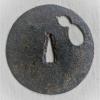


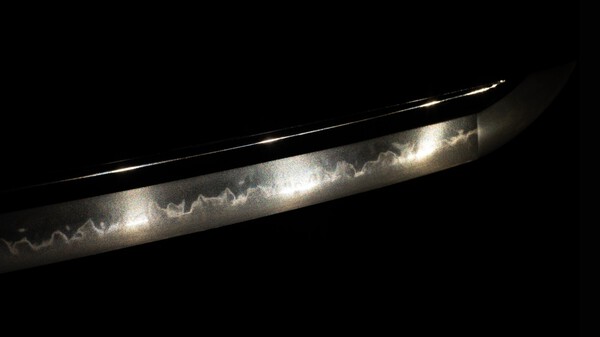




.thumb.jpg.12f3ae07783fa0f0a7a6ce0f0334ab41.jpg)
.thumb.jpg.d01048378e2dee96a5c36bcfc6d70a7b.jpg)

